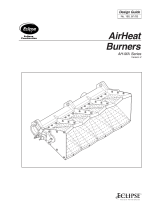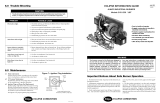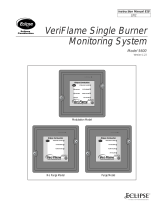
5
Eclipse ExtensoJet v2 Installation Guide No. 230, 9/17/2008
Table of Contents
Introduction .................................................................... 6
Product Description ......................................................... 6
Safety .............................................................................. 7
Introduction ...................................................................... 7
Safety .............................................................................. 7
Capabilities ...................................................................... 7
Operator Training............................................................. 7
Replacement Parts .......................................................... 7
Installation ...................................................................... 8
Introduction ...................................................................... 8
Handling and Storage ...................................................... 8
Position of Components .................................................. 8
Approvals of Components ............................................... 8
Checklist Before Installation ............................................ 9
Preparing the Burner ....................................................... 10
Burner Installation............................................................ 11
Piping............................................................................... 12
Valve Installation .............................................................. 13
Checklist After Installation ............................................... 14
Prepare for Adjustment .................................................... 14
Adjustment, Start & Stop .............................................. 15
Introduction ...................................................................... 15
Modulating Gas and Air Ratio System ............................. 15
Step 1: Reset the System ........................................... 15
Step 2: Set High Fire Air ............................................. 16
Step 3: Set Low Fire Air .............................................. 16
Step 4: Verify the Air Settings ..................................... 16
Step 5: Ignite the Burners ........................................... 17
Step 6: Set High Fire Gas ........................................... 17
Step 7: Set Low Fire Gas ........................................... 18
Step 8: Verify the Gas Settings ................................... 18
Fixed-Air System ............................................................. 18
Step 1: Reset the System ........................................... 18
Step 2: Set High Fire Air ............................................. 18
Step 3: Ignite the Burners ........................................... 19
Step 4: Set High Fire Gas ........................................... 20
Step 5: Set Low Fire Gas ........................................... 20
Step 6: Verify the Gas Settings ................................... 20
Set the Bypass Pilot Gas (Optional) ................................ 21
Start Procedure ............................................................... 21
Stop Procedure................................................................ 21
Maintenance & Troubleshooting .................................. 22
Introduction ...................................................................... 22
Maintenance .................................................................... 22
Monthly Checklist ............................................................ 22
Yearly Checklist ............................................................... 23
Troubleshooting Procedures ........................................... 24
Illustrated Parts Lists ....................................................... 26
Appendix ........................................................................ 28
Conversion Factors ......................................................... 28
1
2
3
4
5


























